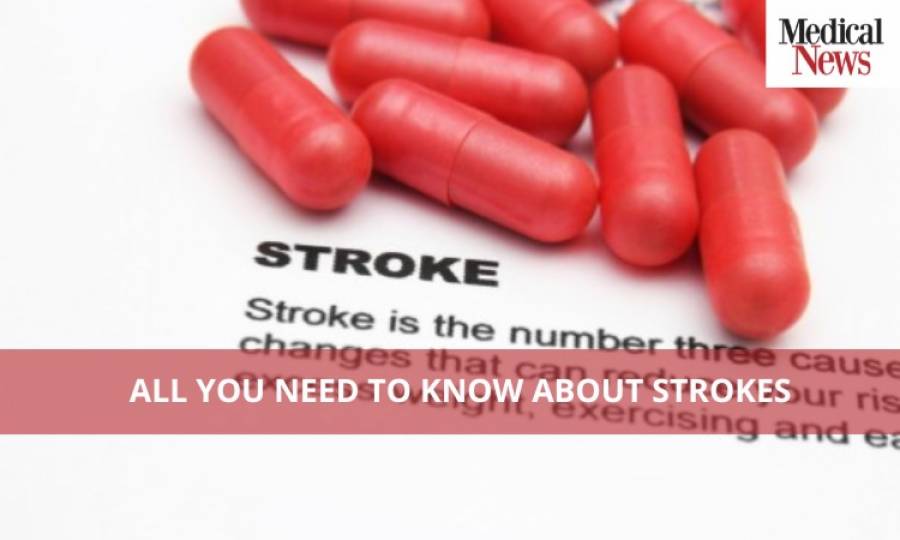All you need to know about Strokes

A stroke, like a heart attack, is a life-threatening condition. The term "brain attack" is occasionally used to describe a stroke. It is most common for a clot to prevent blood from flowing to the brain, leading to stroke. Brain cells in the local vicinity start dying due to a lack of oxygen and nutrients. Two types of strokes exist. Ischemic stroke, the most frequent kind, is brought on by a blood clot blocking or plugging a brain blood artery. On the other hand, hemorrhagic stroke occurs when a blood artery ruptures and spills blood into the brain.
What are the symptoms of stroke?
A lack of blood supply damages the brain's tissues. Symptoms of a stroke may be seen in the portions of the body controlled by the affected brain regions. A stroke victim's prognosis improves if they get medical attention as soon as possible. As a result, being aware of the warning symptoms of a stroke is essential if you want to take appropriate action. Symptoms of a stroke include:
· Vomiting or nausea
· Slurred speech
· Trouble walking
· Paralysis
· Numbness in body parts
· Vision problems
· Dizziness
· Severe Headache
Treatments
Treatments for ischemic and hemorrhagic strokes differ because of their causes and consequences on the body. The sooner a stroke is diagnosed and treated, the less damage it does to the brain and the better the chances of a successful recovery.
For both ischemic and hemorrhagic strokes, there are several treatment options and general rehabilitation advice to be found below:
Ischemic stroke
A clogged or narrowed artery causes an ischemic stroke. When treating stroke, the goal is usually to increase blood flow to the brain. Anticoagulants are used in the first phase of therapy to dissolve and prevent new clots from developing. Tissue plasminogen activator (TPA) injections or aspirin blood thinners are two doctors' options (TPA).
TPA may be injected directly into a cerebral artery, or a catheter can be used to remove the clot. The effectiveness of these techniques is still being studied. To prevent strokes and TIAs, surgeons might undertake further operations. For example, a carotid endarterectomy opens the carotid artery and eliminates any plaque that might move to the brain.
Angioplasty is another treatment. A catheter is inserted into a constricted artery and used by the surgeon to inflate a tiny balloon. Afterward, a mesh tube or a stent will be inserted into the orifice. As a result, the artery does not get narrowed again.
Hemorrhagic stroke
Hemorrhagic strokes may be caused by blood spilling into the brain. In this case, controlling the bleeding and lowering cerebral pressure are two primary treatment goals.
Medications that lower brain pressure, manage general blood pressure, and avoid seizures and rapid constrictions of blood vessels, are often used as the first step in treatment. Warfarin and clopidogrel are blood-thinning anticoagulants and antiplatelet drugs that may be countered with other medications. Patients who have had hemorrhagic strokes may have their blood arteries repaired by surgeons.
The bottom line
A stroke develops when a ruptured artery or an arterial obstruction stops the brain from receiving the oxygen-rich blood it needs. If this happens, the brain cells in that area may begin to die within minutes. Injury or death may be the outcome of the harm.
Blood clot-busting medications and cholesterol-lowering drugs are among the treatments for stroke. Stroke medications operate in a variety of ways. Others may be used to treat a stroke that has already occurred or to prevent one from occurring in the first place.
Advertisement
Trending
Popular
Hair loss: Discovery uncovers key stem cells that could reverse ...
-
Broccoli sprout compound may help lower ...
11:31 AM, 25 Feb, 2025 -
Gas Pain vs. Heart Attack: How to tell ...
09:00 PM, 22 Feb, 2025 -
Coconut oil supplement shows promise ...
08:00 PM, 20 Feb, 2025 -
How diet affects cancer risk: Latest ...
08:00 PM, 12 Feb, 2025



